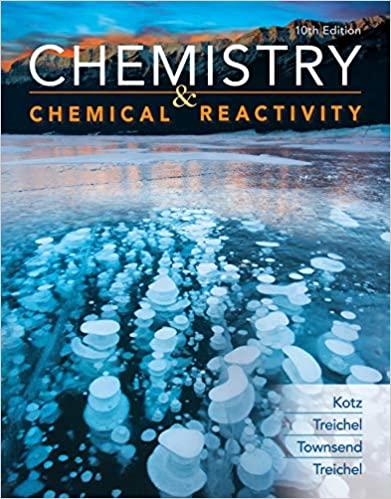Composition diagrams, commonly known as alpha plots, are often used to visualize the species in a solution
Question:
Composition diagrams, commonly known as “alpha plots,” are often used to visualize the species in a solution of an acid or base as the pH is varied. The diagram for 0.100 M acetic acid is shown here.
The plot shows how the fraction [alpha (α)] of acetic acid in solution,![a [CH COH] [CH,CO_H] + [CH,CO2 1](https://s3.amazonaws.com/cdn.images.solutioninn.com/images/question_images/1697/7/2/2/20365312f5b4b9c51697722203795.jpg)
changes as the pH increases (blue curve). (The red curve shows how the fraction of acetate ion, CH3CO2−, changes as the pH increases.) Alpha plots are another way of viewing the relative concentrations of acetic acid and acetate ion as a strong base is added to a solution of acetic acid in the course of a titration.
(a) Explain why the fraction of acetic acid declines and that of acetate ion increases as the pH increases.
(b) Which species predominates at a pH of 4,acetic acid or acetate ion? What is the situation at a pH of 6?
(c) Consider the point where the two lines cross. The fraction of acetic acid in the solution is 0.5, and so is that of acetate ion. That is, the solution is half acid and half conjugate base; their concentrations are equal. At this point, the graph shows the pH is 4.74. Explain why the pH at this point is 4.74.
Step by Step Answer:

Chemistry And Chemical Reactivity
ISBN: 9780357001172
10th Edition
Authors: John C. Kotz, Paul M. Treichel, John Townsend, David Treichel




